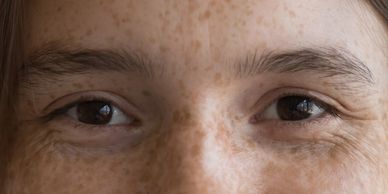Laser - skin
Melasma
Tattoo Removal
Sun Spots

Laser treatment is a viable option for melasma, especially for cases resistant to other treatments like creams and peels. Various lasers, including Q-switched, picosecond, and non-ablative fractionated lasers, are used.
Sun Spots
Tattoo Removal
Sun Spots

Laser treatments are an effective way to reduce the appearance of sun spots (also known as age spots or liver spots) by targeting the melanin in the skin. Lasers break down the pigment, allowing the body to naturally eliminate it over time.
Tattoo Removal
Tattoo Removal
Tattoo Removal

Laser tattoo removal uses focused light beams to break down tattoo ink pigments, allowing the body to naturally eliminate them, leading to fading and eventual removal of the tattoo.
Rosacea
Active Acne & Acne Scars
Tattoo Removal

Laser treatment is an effective way to reduce the redness and visible blood vessels associated with rosacea. Various types of lasers, such as pulsed dye lasers (PDL), Nd:YAG lasers, and KTP lasers, can be used to target and destroy the dilated blood vessels that contribute to rosacea symptoms. These treatments can significantly reduce redness, flushing, and the appearance of spider veins.
Spider Veins
Active Acne & Acne Scars
Active Acne & Acne Scars

Laser treatment is an effective method for reducing the appearance of spider veins, which are small, dilated blood vessels visible near the skin's surface. The laser energy targets and heats the blood within the veins, causing them to collapse and gradually fade away as the body reabsorbs them. Multiple sessions may be needed for optimal results, and while laser treatment can significantly improve the appearance of spider veins, it doesn't always address the underlying cause, and new veins may appear over time.
Active Acne & Acne Scars
Active Acne & Acne Scars
Active Acne & Acne Scars

Laser treatments can be effective for both active acne and acne scars. For active acne, lasers like AviClear target acne-causing bacteria and reduce inflammation. For acne scars, fractional lasers stimulate collagen production, improving skin texture and scar appearance.
Skin Rejuvenation
Microblading Removal
Skin Rejuvenation

Laser skin rejuvenation uses laser light to improve the skin's appearance by reducing wrinkles, scars, and other imperfections, and by stimulating collagen production for a smoother, firmer texture. The two main types of lasers used are ablative and non-ablative, each with varying effectiveness and recovery times. Ablative lasers remove the outer layer of skin, while non-ablative lasers heat the underlying skin to stimulate collagen production without removing the outer layer.
Nail Fungus
Microblading Removal
Skin Rejuvenation

Laser treatment for nail fungus is a procedure that uses focused light energy to kill the fungus under the nail. The laser beam passes through the nail plate and heats the fungal colony, impairing its ability to grow. This is a relatively new and increasingly popular treatment option that is considered safe and effective.
Microblading Removal
Microblading Removal
Microblading Removal

Laser treatment for Microblading removal is a quick and effective procedure done with our medical-grade Q-Switch Laser. Usually 6-8 treatments are required to remove it depending on type of ink and age of the Microblading.
Laser - skin - Prices
Spider Veins 1 - Package of 6
Tattoo Removal 1 -Pack of 8
Spider Veins 1 - Package of 6
- Small Area -$60 $300
- Big Area - $100 $500
**Vein Removal requires assessment prior to receiving final price.
Pigmentation 1 - Pack of 6
Tattoo Removal 1 -Pack of 8
Spider Veins 1 - Package of 6
- Sun Spots -$100 $500
- Nose - $25 $125
- Neck - $85 $425
- Decolletage - $88 $440
- Dark Underarms-$88 $440
- Face, Neck, Decolletage 1 treatment - $415 $2075
- Hands - $75 $375
- Shoulders - $88 $440
- 1/2 Back -$165 $825
- Full Arms - $225 $1125
- Stomach - $150 $750
- Full Back - $250 $1250
- Back & Shoulders $270- $1350
- Melasma - $100 $500
Tattoo Removal 1 -Pack of 8
Tattoo Removal 1 -Pack of 8
Tattoo Removal 1 -Pack of 8
**Tattoo Removal requires assessment prior to receiving final price.
** Microblading removal(eyebrows) $120
per session. (6-8 sessions are recommended)
Active Acne & Acne Scars
Active Acne & Acne Scars
Tattoo Removal 1 -Pack of 8
- Deep Fractional for Acne Scars 1 treatment - $400
- Active Acne 1 treatment - $120
Skin Rejuvenation
Active Acne & Acne Scars
Skin Rejuvenation
- 1 treatment - $150
- Package of 3 - $300
- Package of 6 - $800
Nail Fungus 1 - Pack of 4
Active Acne & Acne Scars
Skin Rejuvenation
- Weekly treatments $200 each
- Package of 4-$700
**It will take 9-12 months for new nail to grow.